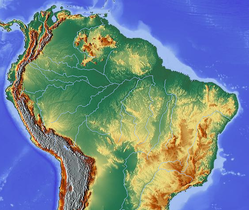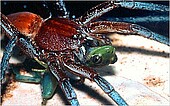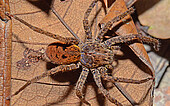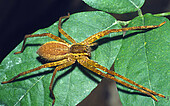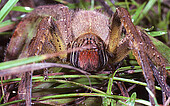Large wandering spiders in Amazonian forests
On this site we want to summarize existing published data as well as unpublished information from our own experiences with the large wandering spiders in Brazil of the family Ctenidae. These are mainly based on nocturnal excursions in the Amazon and therefore there is certainly a bias to the Amazonian fauna.
We (Thierry Gasnier, Hubert Höfer, Antonio Brescovit) started to study biology and ecology of the large wandering spiders living on the ground of Amazonian forests in 1992, within a German research programme on tropical biodiversity. Starting point of our interest in factors and traits allowing the coexistence of several abundant Ctenid species in the same habitat were observations of spatial and temporal patterns of abundances during our daily nocturnal excursions in the famous Reserva Ducke near Manaus. But first, the taxonomy of the species had to be resolved and several species were (re-)described (Höfer et al. 1994, Brescovit & Von Eickstedt 1995, Brescovit 1996, Höfer & Brescovit 2000).
Based on sufficient taxonomic knowledge Thierry Gasnier analysed numerous nocturnal samples along transects in his Ph.D. study (Gasnier 1996). The results of several subsequent studies (Vieira & Höfer 1994, 1998, Gasnier & Höfer 2001, Salvestrini & Gasnier 2001, Gasnier et al. 2002, Rego et al. 2007, Mestre & Gasnier 2008, Torres-Sanchez & Gasnier 2010) contributed to a model on the coexistence of the species (Gasnier et al. 2009), which is still in discussion and development.
Since 2010, Thiago Gomes de Carvalho contributes to the project, based on his interest to assemble a photographic archive of Amazonian spiders.
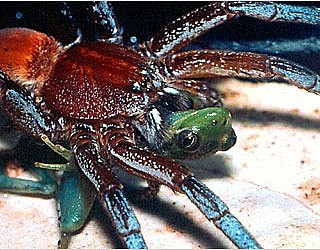
Taxonomy of Ancylometes
Spiders of the genus are large ecribellate hunting spiders, with a total body length of 15-40 mm. Prosoma is oval to pear-shaped in dorsal view, 1.2 to 1.4 times longer than wide.
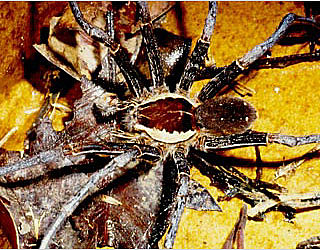
Biology of Ancylometes
Notwithstanding its fascinating biology the (published) knowledge of most of the species´ natural history and ecology is still sparse. I report here on my and my colleagues experiences.





